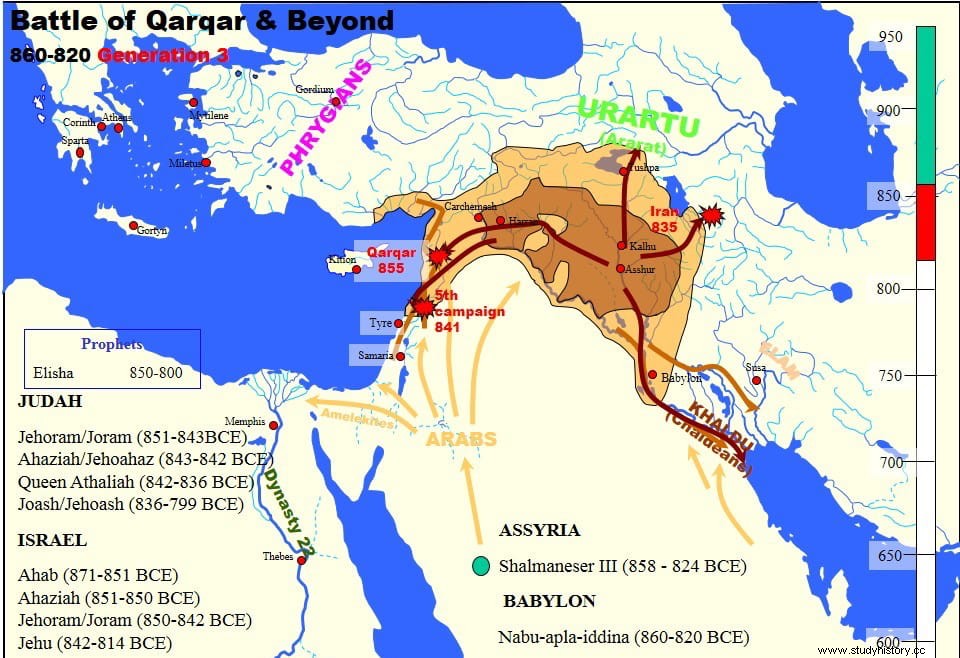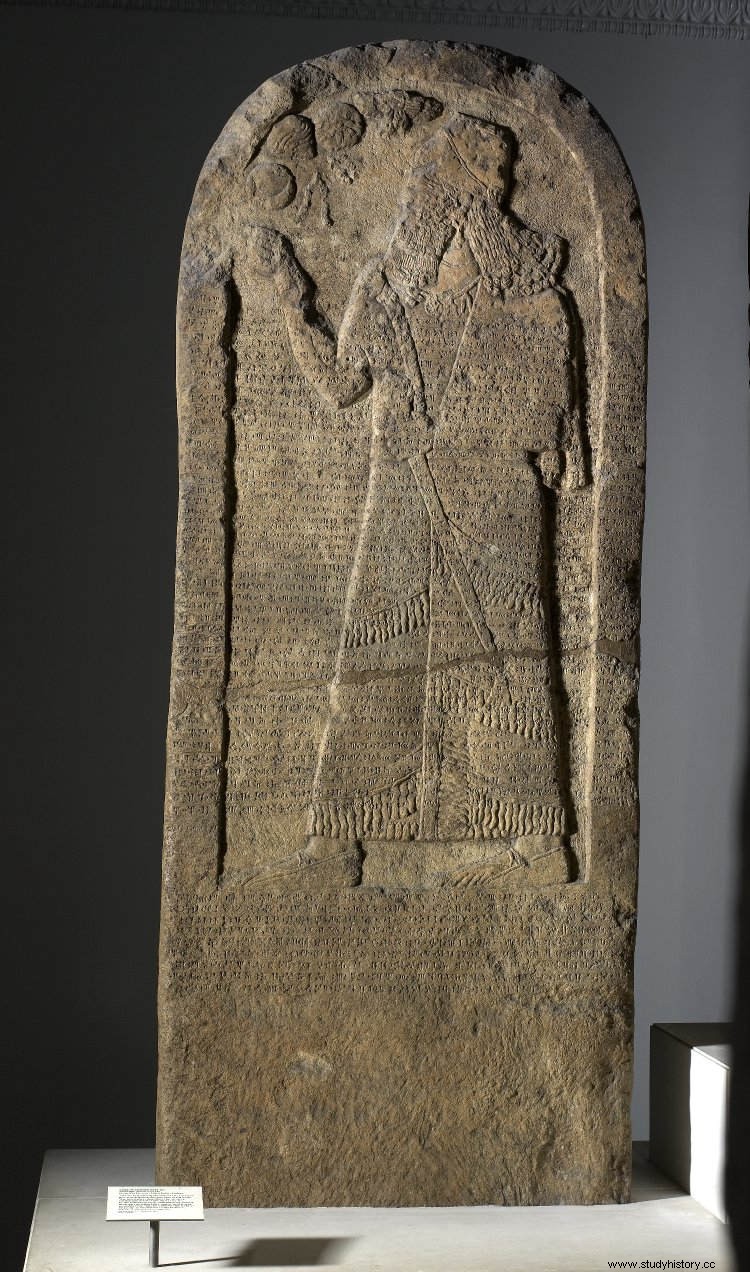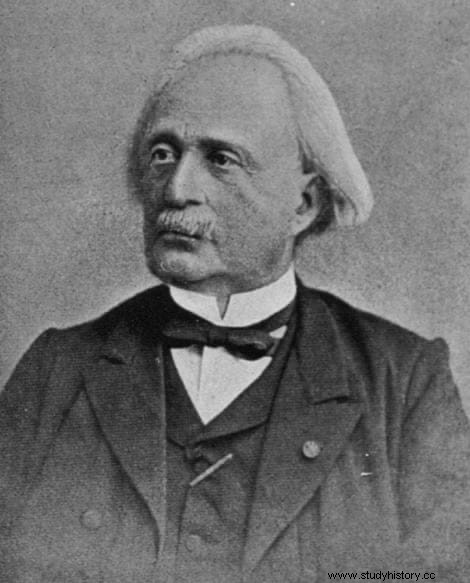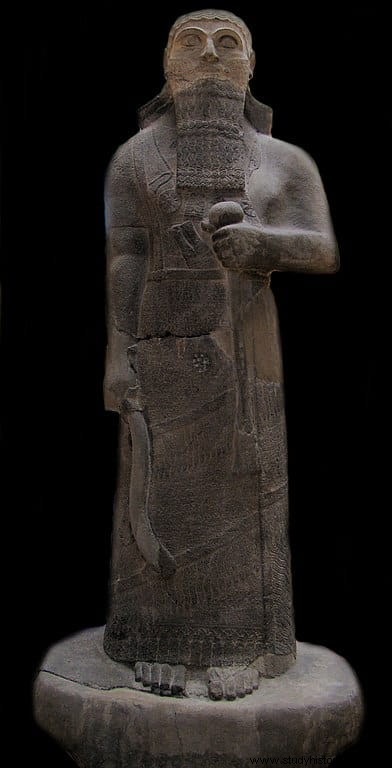One of the most curious, interesting and controversial archaeological pieces preserved by the British Museum is the so-called Kurkh Monolith. It is a fairly large Assyrian stela that bears inscribed descriptions of King Shalmaneser III. The information it provides is essential to understand the sovereign's military campaigns, but it is also important because it contains the first documentary mentions of the Arabs and Israel, the latter with some controversy, as we will see.
“…I was fortunate to discover a stone slab bearing the effigy of an Assyrian king and covered on both sides with long inscriptions in cuneiform characters, less than two feet from its base, which had been deliberately left uncovered.” This is how the discovery of the monolith in 1861 was described by its discoverer, John George Taylor, an agent of the British East Indian Company and a Foreign Office official who combined his administrative duties as British consul in Kurdistan (an eyalate or province of the Ottoman Empire) with his another great hobby, archaeology.
In fact, as vice-consul in Basra seven years earlier, he had already participated in the excavations of Ur and Eridu under the orders of Henry Rawlinson, the father of Assyriology. He was now working in the city of Kurkh, the current Turkish Üçtepe, which his mentor Rawlinson identified with ancient Tushan, although other specialists today consider that it might be Tidu. In any case, on the bank of the Tigris River; There, Taylor came across the stela in question, a 7-foot-tall, 34-inch-wide, 9-inch-thick block of limestone with a rounded top.

On his forehead is the figure of the Assyrian king Shalmaneser III surrounded by four divine symbols:the winged disc that represented Asur, a six-pointed star that did the same with Ishtar, the three-horned crown of Anu and the crescent of Anu. Without. Likewise, the monarch wears various amulets on his necklace and raises his right hand in a gesture that some interpret as ritual and others as authority.
The rest of the stela is covered with cuneiform signs that describe Shalmaneser's aforementioned campaigns through Mesopotamia and Syria. In the final part, the Battle of Qargar is narrated, in which he fought an alliance of eleven kings led by Irhuleni of Hama (a Syrian-Aramaic city) and Hadadezer of Aram-Damascus (another Aramean state developed around the current capital Syria), which also included the Aramean kingdom of Bit Adini, the Neo-Hittite of Karkemish, the Israelite of King Ajab, and an Egyptian contingent sent by Pharaoh Osorkon II.

The clash occurred in the year 853 B.C. in the Orontes valley (the same one where another famous battle, that of Kadesh, was fought) and tens of thousands of troops and almost 6,000 war chariots participated. The Assyrian troops crossed the Tigris and the Euphrates, to advance and take Aleppo, then continuing their expansion to the east. The outcome of the war was uncertain because, on the stela, Shalmaneser boasts of having caused 14,000 casualties to the enemy but we know that the Assyrians omitted the defeats in their inscriptions and, in any case, it is significant that the Aramean kingdoms maintained their independence for a few years. more years.
In other words, many historians today believe that it was actually an Allied victory and proof would be that Irhuleni later had a good relationship with Assyria. But that is secondary. What is truly surprising about the Kurkh Monolith is that, among the members of the coalition, it cites King Ajab of Israel and King Gindibu of Arabia, the latter providing a thousand camels. These references have raised dust because they are seminal in the sources and have not been accepted by all researchers, given that some doubt the translation.
And the fact is that the text speaks of «A-ha-ab-bu Sir-ila-aa» , which the Franco-German Assyriologist Julius Oppert translated as "Ahab of Israel" (Histoire des Empires de Chaldée et d’Assyrie , 1865). Seven years later, another prestigious German orientalist, Eberhard Schrader, reviewed in his book Die Keilinschriften und das Alte Testament (Cuneiform inscriptions and Old Testament) that the name of Sir-ila-a-a to refer to Israel was something unprecedented in the inscriptions of the time, something that many took advantage of to question its veracity and propose instead that the correct translation for A-ha -ab would be "king"; This is what specialists like George Smith and Daniel Henry Haigh thought, or even more recent ones like Werner Gugler or Adam van der Woude.

However, Schrader concluded by agreeing with Oppert by arguing that Ahab Sir'lit could be Ahab of Israel if one takes into account that in other inscriptions the names of the monarchs associated with his country appeared, something that was even evident in that stela with Benhadad of Damascus. But that did not convince the critics, who also argued that the size of Ahab's forces described in the monolith (10,000 infantry and 2,000 war chariots) were excessive for a kingdom of the dimensions that Israel would have at the time.
An Israel that, on top of that, at that time does not appear named like that anywhere but as the Land of Omri or even Samaria. Of course, it was also not uncommon for the same place to be known in two different ways, so the question continued to tangle, even on Shalmaneser III's own stela. The truth is that until then only partial transcriptions of the text were worked on and the first complete one did not arrive until 1887, the work of the scholar James Alexander Craig. This allowed further study and new theories emerged.

One of them suggests that the scribes could have made an error when making the inscription, putting an extra zero in the number of chariots and thus resulting in 2,000 instead of 200, which would be a more logical number. It would be confirmed by other errors found in the writing, such as having written Gu-a-a (the neo-Hittite city of Que) instead of Gu-bal-a-a (the Phoenician Byblos, then a tributary of Assyria), which is a geographical absurdity because the The first is far away, in Cilicia. Of course, it could also have been a deliberate exaggeration to extol Shalmaneser's merit in facing such a great enemy.
Another considerable error would be that, according to the text, the Assyrian king faced an alliance of twelve monarchs when there should be eleven. The difference is that perhaps the scribe confuses his name - he says verbatim «Ba'sa the man of Bit-Ruhubi, the Ammonite- with Beth-Rehob, a town in southern Syria and Ammon, another located in Transjordan.
What is the correct explanation? Well, actually there is not for now, since the issue remains unclear. Meanwhile, the Kurkh Monolith is considered to contain one of the first explicit allusions to Israel (along with those of the Merneptah, Tel Dan and Mesha stelae), perhaps already counting on vassal states such as Moab, Edom and Judah. The one that makes the thousand camels of the Arab Gindibu is also original. By the way, Shalmaneser had to give up going forward but in 845 B.C. the Assyrians would defeat the coalition and turn Israel into a tributary kingdom and then seize Anatolia, laying the foundations for the mighty empire to come.
